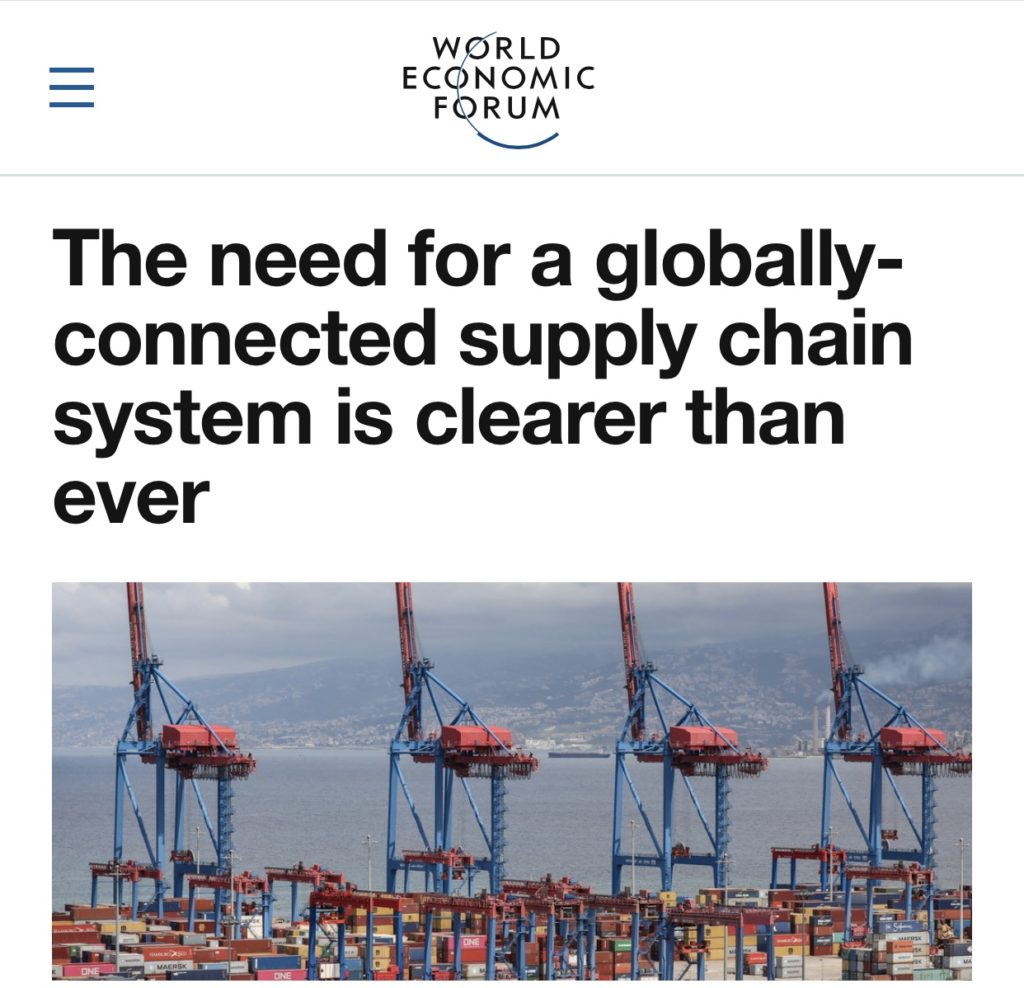The need for a globally-connected supply chain system is clearer than ever
Holed-up at home on a Wednesday afternoon two weeks ago, I found it comforting to track my teenage daughter’s plane from London to Geneva – one of the few flights operating – with FlightRadar24. It seems obvious and natural that the airline industry has real-time tracking of every aircraft. A global network of passenger and aircraft data to empower all industry role players including me at home, with real-time visibility, data intelligence, and communication networks to rapidly adapt to changing conditions.
Yet at this moment of the COVID-19 global emergency, there is no straightforward solution to locating much-needed essential goods wherever they may be across the globe and routing them to where they’re needed most. It’s not possible to Google the world’s product inventory and redirect supply, Uber-style, to where there is demand. The contrast between our ability to track aircraft in real-time and our inability to track much-needed supplies is extreme – underscored by the fact that in our connected world, the problem is eminently solvable.

As Margi Van Gogh, Head of Supply Chain and Transport for the World Economic Forum said recently: “Visibility, traceability, and interoperability are essential to connected, agile and more resilient supply systems now and well beyond the immediate COVID-19 crisis.”
This month saw the release of a white paper on a framework for blockchain interoperability in supply chains published by the World Economic Forum in collaboration with Deloitte. The whitepaper shines a light on inter-working between supply chain blockchains to “help build end-to-end solutions across multiple supply eco-systems,” as described by Van Gogh.
“To date, it has been difficult to track every system and organization a product touches as it transits through the commercial ecosystem – but it doesn’t have to be.”
As a result, we suffer huge inefficiencies of working capital, which is too often tied up in inventory that may be in the wrong place at the wrong time. We also face losses in income to parallel trade, counterfeiting, and other integrity threats, and a lack of adaptability to shifts in demand or conditions. In addition, supply chain opacity presents an enormous barrier to addressing sustainability goals that call for the reuse, resale and/or recycling of products and their components.
Leveraging mature, scalable technologies and tools
End-to-end visibility and transparency across the supply chain can only be achieved through interoperability and data sharing between disparate systems. By definition, any product – its components and the orders that move collections of those products around the world and ultimately, into the hands of the consumer – involves myriad systems and touchpoints with multiple organizations along the supply chain. To date it has been difficult to track every system and organization a product touches as it transits through the commercial ecosystem – but it doesn’t have to be
Just as we can connect a web server to the internet and make content accessible to anyone on the planet, it is also possible for product items to be visible and traceable — to those with relevant credentials – as they flow across the network of global supply chains.
We have powerful, mature, globally-scalable technologies and tools at our disposal: Internet of things technologies and the global standards to connect every item to the web with a digital identity in the cloud; ontologies to describe items digitally and consistently; protocols for data exchange; smart contracts to automate transactions and operate policies for data sharing between the multiple stakeholders involved in a product’s end-to-end journey; massively scalable analytical intelligence in the cloud; and distributed ledgers to make the management of data resilient and trustable across ecosystems. We have the tools and technologies. We now need the networks of organizational collaboration to execute at scale.
It is also about learning from the crises. COVID-19 has brought many supply chains to a standstill. Restarting the global trade network machine will not be easy after such an abrupt stop, and the lack of connectivity and data exchange will be a huge source of friction to getting the wheels turning again. But COVID-19 is also an opportunity to learn.
As we reboot the global supply chain network, let’s do this with the realization that we already have the tools needed to build a global, adaptive system that networks data intelligence for every item flowing through it. This will yield not only economic efficiency in terms of working capital saved but also a system geared to accommodate changing demand and supply conditions much more effectively. Transparency and agility will provide for more sustainable supply systems – and the planet and her people will benefit.
As each of us adjusts to the isolation of working from home, now is the time to focus on building new networks of collaboration. Building an adaptive supply chain system requires all the stakeholders across the supply system – including, manufacturers, shipping providers, port operators, trucking providers, distributors, retailers, and recyclers to name a few – to recognize we are all part of the same ecosystem and to work with technology providers and regulators to make that system of supply a truly connected one.
You must be logged in to post a comment.